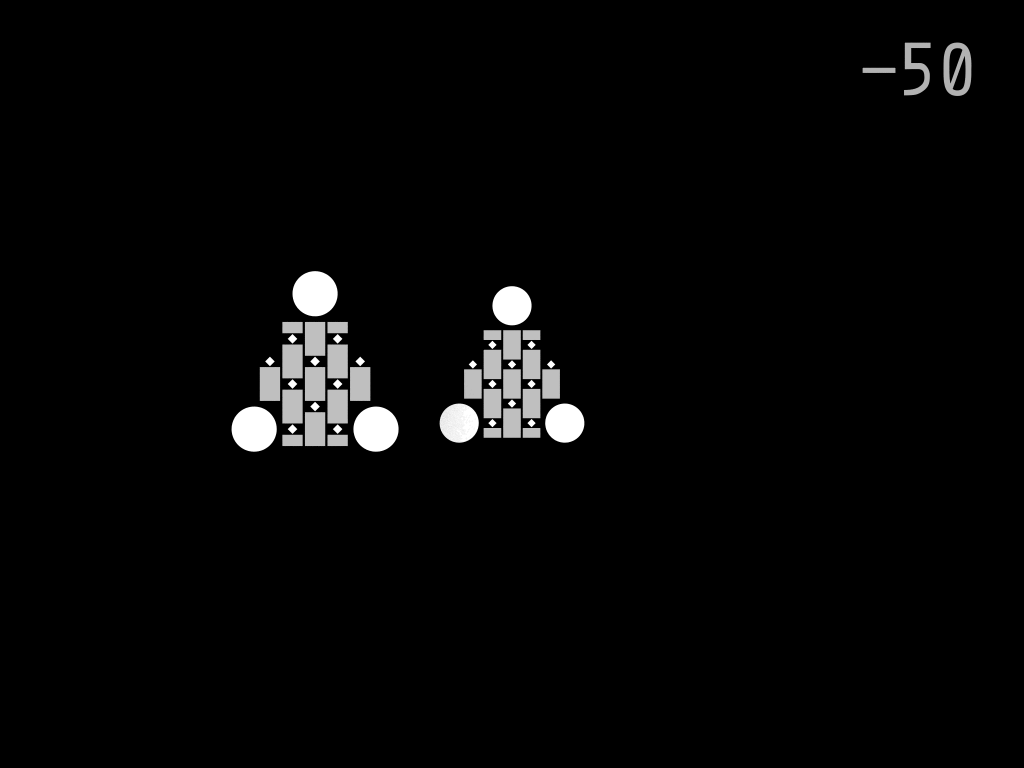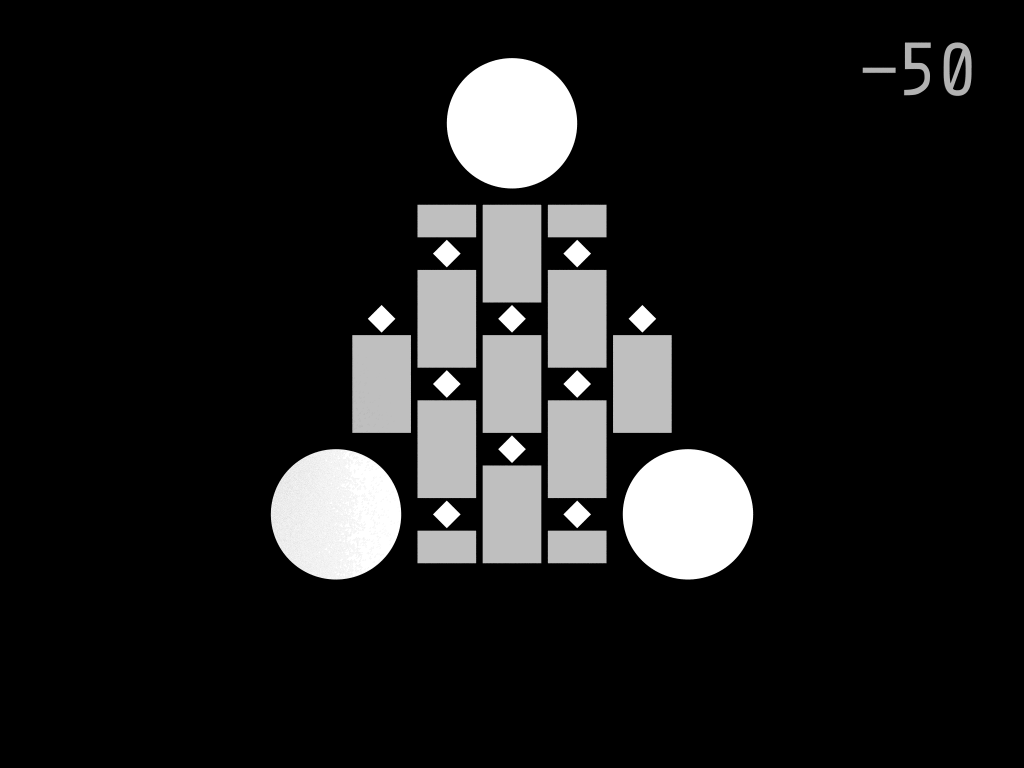Array Fill
Thinsats should be in continuous sunlight for maximum radio and computational power. If one thinsat shades or partially occludes the other, the result will be a loss of power, and nonuniform temperature changes. Thinsats will need to actively and cooperatively move to keep from shading each other.
The sun is 1,391,980 km in diameter, and 149,600,000 km away (on average). Its angular size is 9.3E-3 radians, or 0.53 degrees. A thinsat sized disk 20cm in diameter casts a black shadow up to 22 meters behind it, with a shaded penumbra in a narrow 0.53 degree cone widening to infinity. The penumbra cone is a meter wide 107 meters behind a thinsat, and 10 meters wide 1070 meters behind. However, the amount of shading diminishes with distance, too, though more thinsats in the front will contribute their shadows, too. Suffice it to say that thinsats in the back of the array will get somewhat less light, on average, than those in the front, and the amount of light will have ripples in it. For that reason, we cannot pack an array too densely.
The three dimensional spacing functions used in deployment will require a lot of research to optimize; they must also be compatible with a dither function that smears out grating lobes. There are some great opportunities for research here, and I hope the best functions will be developed for the public domain. However, mathematical functions are difficult to patent, and hopefully there will be an infinite number of suitable patterns, so the patent trolls will need to spend an infinite amount of filing fees to cover all of them.
We can characterize these functions by a "fill factor". Assuming a thinsat area of A = 0.024 m2, and a three dimensional array of N x N x N or N3 thinsats, and a spacing of L, then the fill factor is defined as FF = N3*A/(N*L)2 = N*A/L2. For larger arrays, with many overlapping penumbras in the back, the average illumination in the back is (1-FF), and the temperature of the thinsats will be proportional to the 4th root of that. So if the average thinsat temperature is 330K under normal conditions, it might be 310K in the back of the array with a fill factor of 0.2, and 322K with a fill factor of 0.05 . We can probably survive a fill factor of 0.2, though we must manage thermals carefully and avoid full shading.
The array spacing is L = sqrt( N * A / FF ). The array contains N3 thinsats, the array Edge is (N-1)*L, the array mass M is 0.003kg*N3, the array power is approximately P = 3W*N3, and the main lobe ground spot diameter Gspot at 10,000 km and 8mm (38 GHz) wavelength is approximately Gspot ≈ 1.22*distance*λ/D ≈ 1e5 m2/(N-1)*L :
Fill factor FF=0.2, Thinsat area A=0.024 |
||||||
N |
N3 |
M(kg) |
P |
L (m) |
Edge (m) |
Gspot (m) |
10 |
1000 |
3 |
3kW |
1.10 |
10 |
10000 |
20 |
8000 |
24 |
24kW |
1.55 |
29 |
3440 |
32 |
32768 |
98 |
98kW |
1.96 |
61 |
1640 |
50 |
125000 |
375 |
375kW |
2.44 |
120 |
830 |
64 |
262144 |
786 |
786KW |
2.77 |
180 |
560 |
100 |
1000000 |
3000 |
3.0MW |
3.46 |
340 |
290 |
128 |
2.1M |
6300 |
6.3MW |
3.92 |
500 |
200 |
Fill factor FF=0.01, Thinsat area A=0.024 |
||||||
N |
N3 |
M(kg) |
P |
L (m) |
Edge (m) |
Gspot (m) |
10 |
1000 |
3 |
3kW |
4.9 |
44 |
2300 |
20 |
8000 |
24 |
24kW |
6.9 |
130 |
770 |
32 |
32768 |
98 |
98kW |
8.8 |
270 |
370 |
50 |
125000 |
375 |
375kW |
11.0 |
540 |
190 |
64 |
262144 |
786 |
786KW |
12.4 |
780 |
130 |
100 |
1000000 |
3000 |
3.0MW |
15.5 |
1530 |
65 |
128 |
2.1M |
6300 |
6.3MW |
17.5 |
2200 |
45 |
Because of the depth of the array, and the distortions caused by apogee skew, the ground spot will be compressed northeast and southwest and stretched northwest to southeast.
If a launch can put 3146 kg of thinsats (1.049 million) into an M288 orbit, and these are deployed into 32 arrays spaced 11.25 degrees apart, then each array can contain 32768 thinsats, a distorted cube 32 thinsats on a side.
- Note: Real arrays will probably be a more complicated, spherical array with tetrahedral arrangement and spacing and Golomb-ruler offset dither. Too complicated to analyze and explain here.
If thinsats are spaced 8 meters apart, the array is 250 meters on a side, the ground spot diameter is 400 meters, and the fill factor is 0.012 . The array rotates 360 degrees in about 4 hours, or 40 seconds per degree. A 20 cm wide thinsat will partially eclipse another thinsat directly behind it for about 1 minute out of every 4 minute orbit; we can probably arrange spacing and dithering so the thinsats are never precisely in line.
|
|


